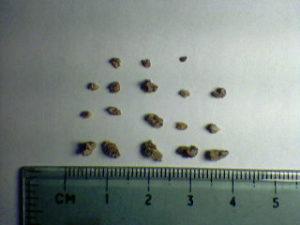 When the Dallas City Council agreed to consider ending the city’s nearly 50 year old fluoridation policy earlier this year, fluoride’s supporters were up in arms. Insults flew wildly, with pro-fluoride pundits grasping for the usual epithets and creaky Cold War stereotypes.
When the Dallas City Council agreed to consider ending the city’s nearly 50 year old fluoridation policy earlier this year, fluoride’s supporters were up in arms. Insults flew wildly, with pro-fluoride pundits grasping for the usual epithets and creaky Cold War stereotypes.
Of course, snark like that is never about engaging in debate or correcting ideas they believe are misguided. It’s about shutting people up. And in light of the latest science, silence, as one more reasonable, informed and perceptive Dallas Observer blogger pointed out, is the last thing we need.
It’s absolutely wrong to think we can afford to shut down the debate on fluoride or any other neurotoxin because of a cultural association with people who worry about neurotoxins. This isn’t coonskin caps and anti-communism. This is all new, powerful and urgent. Not worrying about it would be the crazy thing.
But it’s not just current research that heightens concern. As we’ve noted before, there is more than 80 years of excellent research demonstrating the variety of harms excess fluoride can – and does – cause. Many of these are grave, such as cancer and damage to children’s developing brains. Others are a little more pedestrian.
Consider kidney stones, sharp-edged masses of mineral deposits that form in urine and can grow to the size of a golf ball. Small ones may be passed without a person even noticing, but large ones can cause a whole lot of pain. While they may sound mainly like an annoyance, Mayo Clinic researchers have found that they may damage the kidneys and lead to chronic kidney disease.
 Fluoride, it turns out, is a significant risk factor for kidney stones.
Fluoride, it turns out, is a significant risk factor for kidney stones.
Why should that be? In another recent newsletter, Dr. Shallenberger discusses one especially strong study – published in 2004 in the Indian Journal of Clinical Biochemistry – that offers insight. And it has to do with oxalates – naturally occurring substances that we get through diet or which our bodies form themselves.
[The researchers] noted that the patients who had the kidney stones had much higher levels of oxalate in their blood and urine than the healthy group….
The authors point out that normally the oxalate that we eat combines with calcium in the meal to form calcium oxalate. Since your body can’t absorb calcium oxalate, it goes out in your bowel movement. This prevents much of the oxalate from moving into the blood and ultimately ending up in the urine to make a kidney stone. However, when we ingest fluoride, it has a much stronger attraction to calcium than oxalate does. So instead of the calcium binding with the oxalate and preventing its absorption, it will bind with the fluoride to form calcium fluoride. This leaves the oxalate free to be absorbed into the blood and can explain why the stone formers had such high levels of oxalate in their blood and urine compared to the healthy group.
How much fluoride made the difference? Those with kidney stones had double the amount in their urine as compared with healthier people and 45 times as much in their blood. Those with the highest amounts also had the highest fluoride levels in their kidney stones themselves.
These results were so strong, the authors could only conclude that there is “a definite role of fluoride in urinary stone formation.”
Subsequent studies proved this one to be sound.
Just one more reason why it’s in our best interest to steer clear of fluoride.
Images by Andy Holt & Trevor Blake, via Flickr